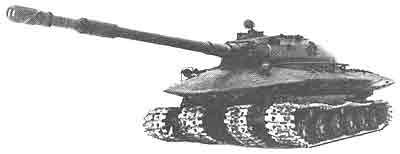China is a large country bordering many other states, the security environment differs from area to area -- unlike smaller states (S. Korea, China) where threat is limited to one direction.
I think if we look at China's size, security requirements, and budget constraints, it'd probably make sense to go with a high-low approach. You could say that they're doing that today with the T-99G vs. T-96?
My armchair general proposal would to be develop a new, western style MBT from the chassis up for the "high" mix. A good MBT to emulate is the Korean K-2 Black Panther. Let's call it "MBT-X".
This tank will NOT be cheap. S. Korea spent $230 million over 11 years on K-2's R&D, and the per unit cost is $8.5 million USD. In comparison, the T-99G is estimated at $2 million each. The PRC cannot easily import technology and components from Western Europe, so it may cost even more for domestic R&D.
==========
My armchair general executive decisions:
1) Fund R&D and production of MBT-X. This will be a completely new MBT, which means it can use 120mm or 140mm gun instead of 125mm gun if desired. It should have smart top-attack munition capability, soft-kill and hard-kill defense vs. ATGM, networked battlefield management system, and possibly even a small wheeled UAV for scouting. The estimated production cost will be comparable to K-2 at $8-10 million per unit (2007 dollars).
2) Fund continued production and improvement of T-96 & T-99G. Production of T-96 should wind down and replaced with improved T-99G. The current estimated production cost on T-99 is $2 million per unit.
3) Fund R&D for converting older MBT's to HAPC/HIFV like Israeli Achzarit and Russian BTR-T or BMPT. The vehicle should be rebuilt with new engine/power pack and armor package. Russia and Ukraine might make good partners for this program. To save costs we could use as many off-shelf components as possible.
For the HAPC, it'd carry lighter weapons but more crew capacity. Typical weapon mount could include 2 x ATGM in box launcher, remote controlled MG, 30mm auto-cannon, automatic grenade launcher, etc.
The HIFV would have heavier weapon mount but less crew capacity. It could be armed with cheaper 30mm auto-cannon, or more expensive 40mm/L70 bofors like auto-cannon with smart munitions (see: Korean XK21), 4-round ATGM box launcher, remote-controlled MG, or even a lightweight CIWS system.
The cost of the HAPC/HIFV conversion should be no more than $1 million each on average, depending on configuration, some more, some less.
4) Fund project to convert (in future) T-96 and T-99 MBT's to HIFV's, and new HIFV's built on T-96/T-99 chassis, like Ukrainian BMT-72/BTMP-84. This is not an urgent project and can be delayed.
Estimated current PLA MBT inventory:
5,000-6,000 x T-59
300 x T-69/T-79
400-500 x T-88
2,000-2,500 x T-96
200+ x T-99
Estimated PLA MBT/HIFV inventory in 2017: (cost spread over 10 years)
5,000 x converted/rebuilt into Heavy APC, Heavy IFV, or combat engineering vehicles
3,000 x T-96 & improved/upgraded variants
2,000 x T-99 & improved/upgraded variants
? x MBT-X
The cost of 5,000 rebuilt HAPC/HIFV at $1 million each is $5 billion
The cost of producing 2000 new T-96/T-99 at $2 million each is $4 billion
We assume R&D cost for above + MBT-X program at $1 billion
Subtotal: $10 billion (over 10 year period, or $1 billion per year)
Assuming the MBT-X is ready for serial production in 2017 (no, I don't think 2010 deadline is realistic), at $10 million each (2007 dollars) you'd get up to 100 tanks per billion dollars. If we allocate $1 billion/year for acquisition, by 2020 the PLA would have 300-400 MBT-X for its elite armor units. I think $1 billion/year expenditure is not completely unrealistic?
---------------
From production point of view, I'd like to keep a 1:1 ratio between MBT and Heavy APC/IFV. If the PLA were to ever deploy to a hostile urban environment like Iraq, the deployment ratio may go to 1 MBT : 2 HIFV
The more expensive 40mm auto-cannon equipped HIFV should be armed with smart munitions, choice of APFSDS, HE, smoke, multipurpose rounds that could be set to proximity, smoke, armor-piercing, or self-destruct at pre-determined distance. The armor on HAPC/HIFV should be able to withstand direct hit from RPG and 30mm munitions, though probably not from all directions.
For lighter IFV development, I'd lean toward the Korean K300/XK21 KNIFV in the 25-ton class. It's light enough for air transport, but packs a big punch against other APC/IFV's. These won't be cheap either, the Koreans are paying about $4 million each.
After production of the T-98/T-99 line winds down, they could switch to building new HIFVs based on the same tank chassis, like Israeli Namera or Ukrainian BMT-72/BTMP-84. When the existing T-96/T-99 are obsolete they could be rebuilt into HIFV's too.
==========
References:
Korean K2 Black Panther MBT:
Korean XK21 KNIFV:
Russian BTR-T:
BMP-T:
Israeli Achzarit:
Israeli Namera:
Ukraine BMT-72 & BTMP-84:




